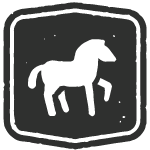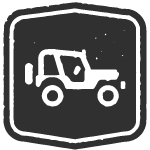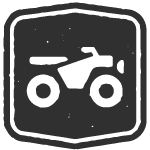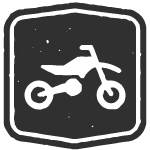Phone: (801) 627-0077 Toll Free: (800) 966-9900

Horseback Riding


TRAVEL RESPONSIBLY
Travel responsibly on designated roads, trails and areas
- Stay on designated roads, trails and other areas open to horse use.
- Ride single file to reduce trail damage.
- Don’t cut switchbacks.
- Spread out in open country where there are no trails. Spreading out, rather than following each other’s footsteps, disperses impact and avoids creating a new trail.
- Comply with all signs and respect barriers.
- Riders should match their skill level to the temperament and ability of the horse they ride.
- At trailheads or staging areas, park vehicles and secure horses in a manner that provides a safe distance between the horses and passing traffic.
- Less experienced horses and riders should ride behind more “trail-wise” horses and riders.
- If you are “ponying” a horse, go slow and never take a loose horse on the trail.
- Buddy up with two or three riders. This reduces vulnerability if you have an accident.
RESPECT THE RIGHTS OF OTHERS
Respect the rights of others, including private property owners and all recreational trail users, campers and others so they can enjoy their recreational activities undisturbed.
- Be considerate of others on the road or trail.
- Be prepared to let other trail enthusiasts know what needs to be done to keep you, the horse and other passersby safe when you meet on the trail.
- Remember, many people are afraid of horses and may react unpredictably.
- Be alert and aware of the presence of other trail enthusiasts. If possible, pull to the side of the trail when you hear oncoming off-highway vehicles or bicycles.
- Leave gates as you find them. If crossing private property, be sure to ask permission from the landowner(s).
- Keep the noise down.
- Be especially cautious around hikers, bikes and motorized vehicles.
EDUCATE YOURSELF
Educate yourself prior to your trip by obtaining travel maps and regulations from public agencies, planning, taking horseback riding skills classes and knowing how to properly manage your horse.
- Obtain a map of your destination and determine which areas are open to your type of pack animals.
- Make a realistic plan and stick to it. Always tell someone of your travel plans.
- Contact the land manager for area restrictions, closures and permit requirements.
- Check the weather forecast for your destination. Plan clothing, equipment and supplies accordingly.
- Carry a compass or a Global Positioning System (GPS) unit and know how to use it.
- Carry water and emergency supplies even on short trips.
- Keep groups small and carry lightweight gear to reduce the number of animals needed.
- Pre-plan camp locations that provide plenty of room and the proper environment for confining animals.
- Take responsibility for your horse’s education. Introduce it to vehicles and situations it may encounter on shared trails.
AVOID SENSITIVE AREAS
Avoid sensitive areas such as meadows, lakeshores, wetlands and streams. Stay on designated routes.
- Other sensitive habitats to avoid, unless on designated routes, include cryptobiotic soils of the desert, tundra and seasonal nesting or breeding areas.
- Do not disturb historical, archeological or paleontological sites.
- Avoid “spooking” livestock and wildlife you encounter and keep your distance.
- Water animals in areas where stream banks and water access can withstand hard use and are downstream from campsites.
DO YOUR PART
Do your part by modeling appropriate behavior, leaving the area better than you found it, properly disposing of waste, minimizing the use of fire, avoiding the spread of invasive species and restoring degraded areas.
- Pack out what you pack in. Carry a trash bag and pick up litter left by others.
- Practice minimum impact camping by using established sites and camping 200 feet from water resources and trails.
- When selecting a campsite, first consider your horses; the site should accommodate them without damaging the area.
- Inspect grazing opportunities before making camp.
- Use yards, paddocks and hitching rails where provided.
- Use hitchlines, hobbles and staking to confine animals. Erect hitchlines in rocky areas with established trees and use straps or tree savers to protect bark.
- If you use temporary corrals, move the enclosures twice daily.
- When breaking camp, remove or scatter manure, remove excess hay and straw and fill areas dug up by animal hooves.
- Repackage snacks and food in baggies. This reduces weight and amount of trash to carry out.
- Observe proper sanitary waste disposal or pack your waste out.
- Bring pellets, grain or weed-free hay to areas where feed is limited or grazing is not allowed. This helps reduce the spread of invasive species.
- Wash your gear and support vehicle and check your animal before and after every ride to avoid the spread of invasive species.
- Build a trail community. Get to know other types of recreationists that share your favorite trail.















